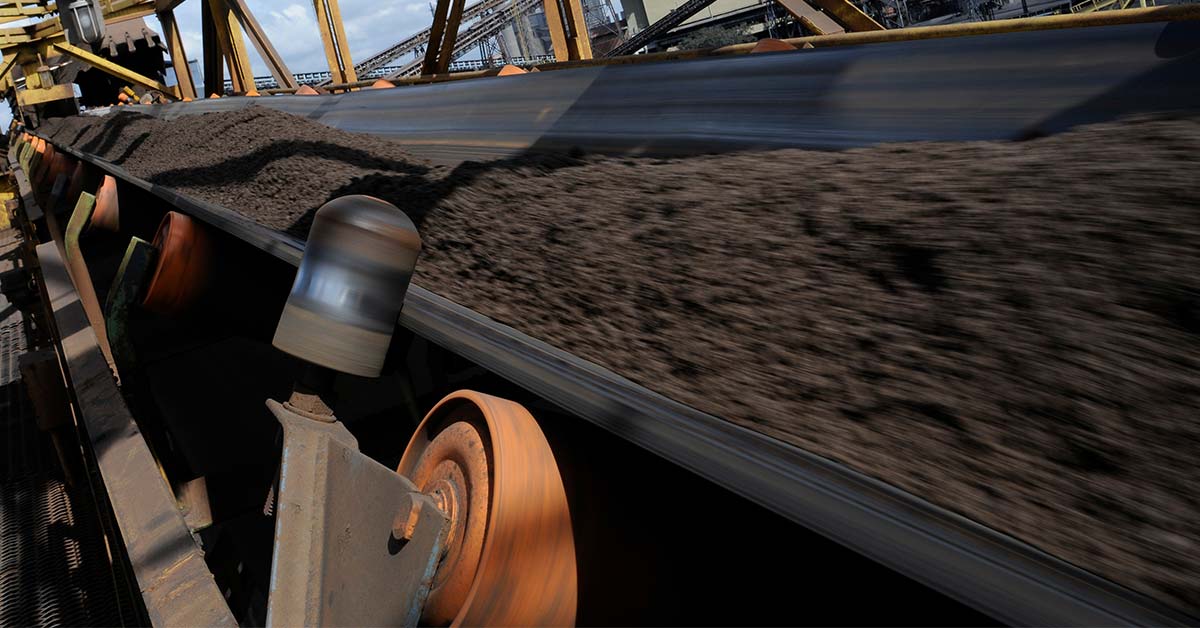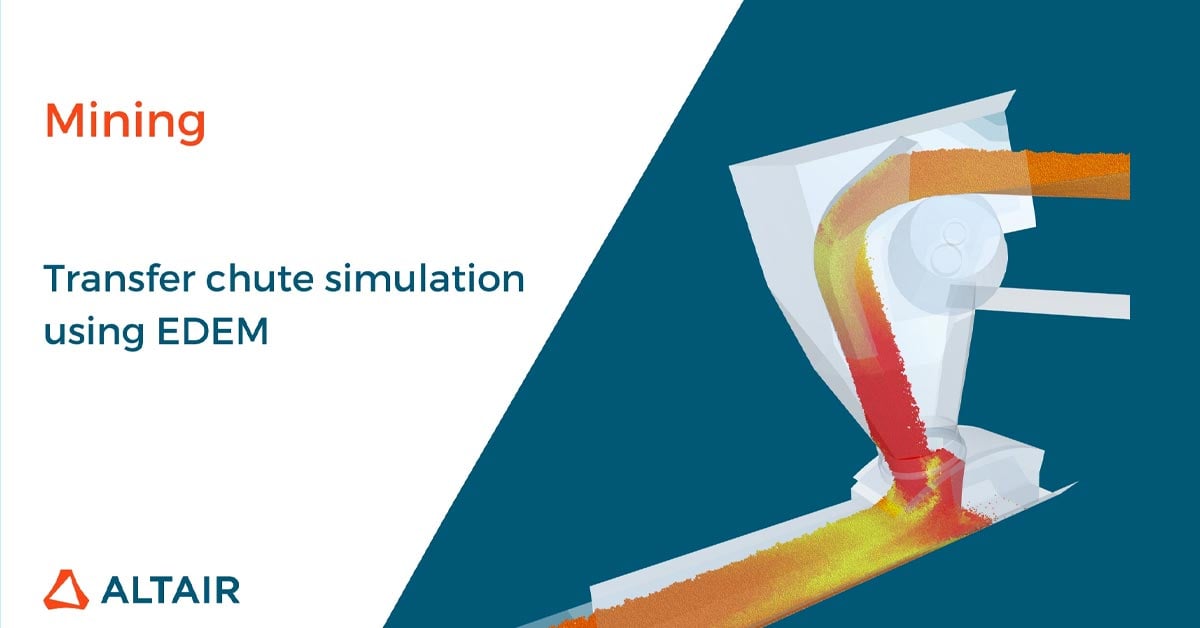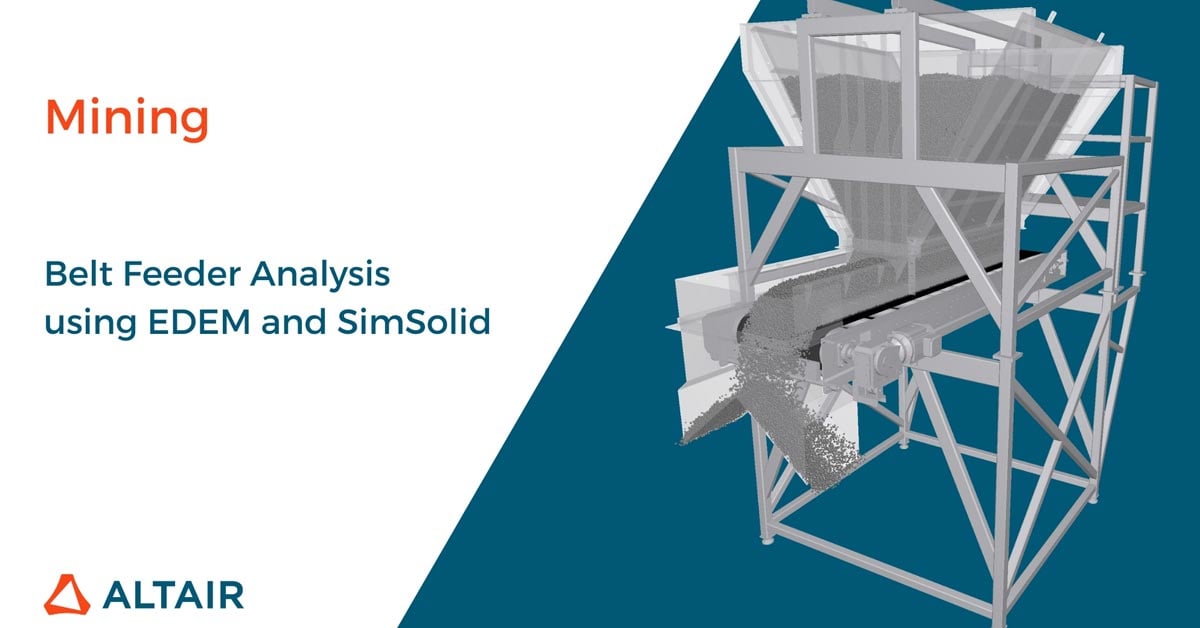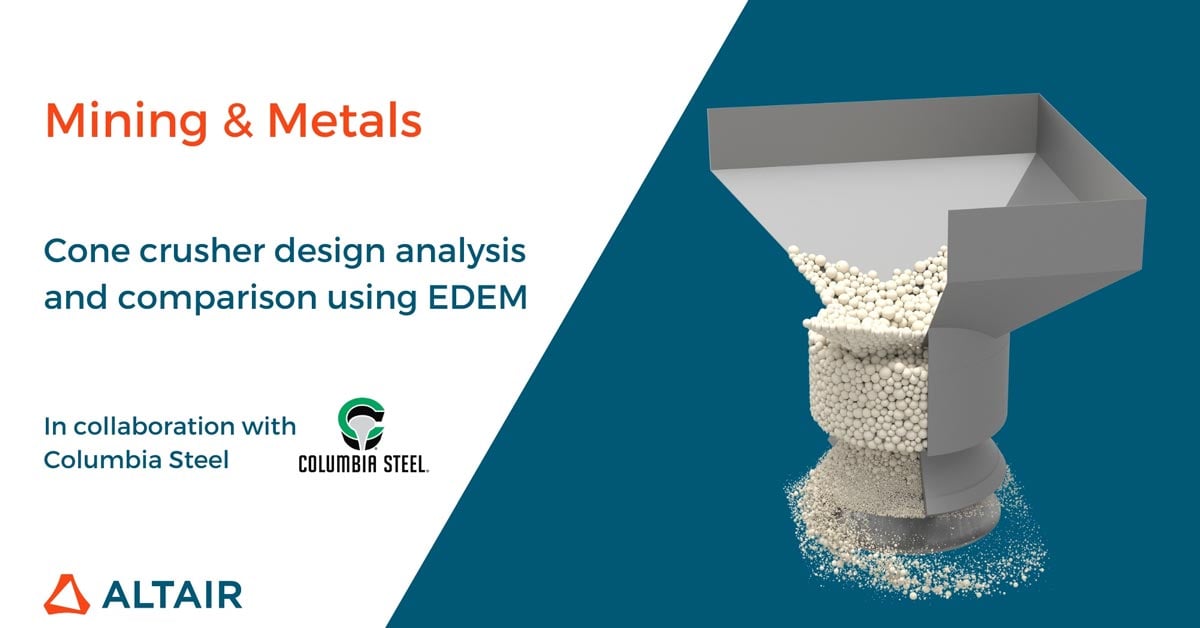Using Altair EDEM in Mining and Metals
Watch examples of applications of EDEM in the mining, mineral processing and steelmaking industries. EDEM software, powered by the Discrete Element Method (DEM), enables engineers to predict the flow behavior of rocks, ores and coal, ores through each segment of their equipment and operation. It is used to evaluate and verify the design of transfer chutes and to optimize comminution equipment such as crushers, ball mills, as well as vibrating screens.
Blast Furnace Charging using Altair EDEM
Using EDEM, you can model large systems like the charging of a blast furnace, providing highly relevant information on the efficiency of the process from a virtual model. This allows you to optimize the burden distribution and predict any segregation or wear on the distributor chute and staves.
EDEM Simulation of Full Scale Mill
This video produced in collaboration with Tega Industries shows how EDEM software can be used to simulate a full-scale mill. The ore rheology at different sections can be analyzed, and the pressure and wear on the shell liners can be predicted, enabling optimization of the mill’s design and operation. Additionally, by using EDEM sensors the discharge flow rate can be found, and more advanced analysis for carry-over and flow-back can be achieved.
EDEM Simulation of Vibrating Screen
This video, produced in collaboration with HL Atacama, shows how EDEM can be used to simulate and analyze a Vibration Screening process. Sensors can be added to measure the total passed mass and data can be exported to analyze the screening process and estimate the efficiency of the decks. The screening decks can be colored by tangential or normal cumulative contact energy to visualize where the geometry is most likely to wear. Grid Bin Groups can also be added to find out where particles cluster.
EDEM Simulation of Jaw Crusher
This video shows the analysis of the jaw crushing process for different materials (iron ore, limestone and granulite). The Tavares Breakage model in EDEM allows accurate modelling of the real process by simulating a continuous feed-rate and the complex motion of the swing jaw. The crushing process for different materials can be optimized and the need for sieve analysis minimized, by obtaining particle size data from EDEM. Equipment design can also be optimized by analyzing the forces and the wear on the crushing plates.
EDEM Simulation of Transfer Chute
EDEM can be used to evaluate and verify the design performance of transfer chutes and address key design challenges such as spillage, blockage and wear.
Belt Feeder Simulation using EDEM and SimSolid
In this video EDEM was used to simulate and analyze the discharge of bulk materials on a belt feeder. A structural analysis of the equipment was performed by coupling EDEM with SimSolid in order to assess the impact that the bulk material loads have on the equipment.
Cone Crusher Design Analysis and Comparison using EDEM
As part of a collaboration with Columbia Steel, EDEM was used in a project with the objective of comparing the throughput performance of two cone crusher mantle designs. The advanced Tavares Breakage Model was used to simulate the material breakage in the crusher, and the comparison and some of the analyses conducted in EDEM can be seen here.
Customer Stories

Upgrading a Coal Transfer Chute - Hatch Deploys Altair EDEM BulkSim Solution for Mining
Hatch Ltd. is a global supplier of engineering, project and construction management services to the mining, metallurgical, energy, and Infrastructure sectors.
Hatch deploys EDEM BulkSim software to explore “what-if” scenarios, while performance testing and verifying complex conveyor transfer point designs.

Dragline Bucket Design - VR Steel Used Altair EDEM to Optimize Dragline Performance and Productivity
VR Steel (Pty) Ltd designs, builds, and repairs fabricated mining equipment attachments. With EDEM virtual prototypes VR Steel field-tests new design options, custom-designs for specific users, builds fewer physical prototypes, shortens the design cycle and increases customer’s productivity.
VR Steel used EDEM with multibody dynamics software to develop a new optimized bucket design - balancing efficiency, capacity, durability and projected O&M costs.

Boosting Mine Chute Design - Improve Chute Design and Reduce Costs with Altair EDEM
Wood is responsible for assessing material handling transfer chutes for crushed ore. The large number of transfer chutes must be optimized to enable the transfer of bulk material from one conveyor belt to another, and to adequately direct the flow of material. Some of the most common issues with material transfer designs include plugging, segregation, and abrasion wear. In an effort to reduce operating maintenance costs, Wood employed the use of Altair EDEM, a discrete element modeling (DEM) solution, to visualize the flow of material and analyze forces and moments acting on different parts of the transfer chute. As a result, Wood reduced the weight of this transfer chute by approximately 10%, adding $20,000 in NPV to the project.

Made of Steel - ArcelorMittal Optimized Sinter Cooler Charging System Using Altair EDEM®
ArcelorMittal is the world’s leading steel and mining company, with a presence in 60 countries and primary steelmaking facilities in 17 countries employing more than 190,000 people.
In a recent project, a large-scale charging chute of a sinter cooler plant in Fos-Sur-Mer had to be optimized by the ArcelorMittal R&D team to improve the reliability and efficiency of this device. The objective was to identify a better and more feasible design that improved granular segregation, abrasion, and mechanical resistance.
ArcelorMittal R&D used the high-performance software for granular material simulation EDEM to simulate and analyze the granular flows in the charging chute. Providing pre-calibrated material models, EDEM enabled the engineers to create and calibrate their EDEM model to match the physical experiments.
The DEM simulation provided valuable insight into the granular flow in the charging chute and segregation patterns, which is difficult and sometimes impossible to measure in experiments.







